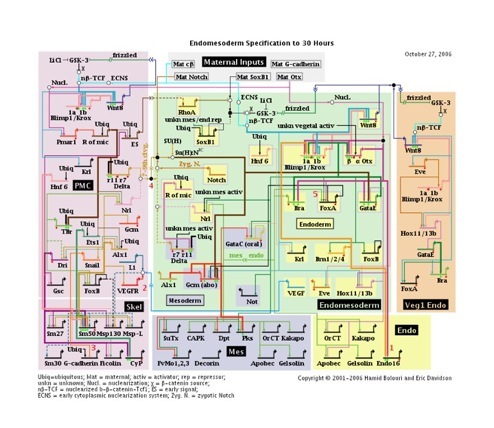Siggia ‘Lab’ Rockefeller Univ.


This site was prepared with a klutzy editing tool from Apple, which necessitates the ugly green inter-topic navigation box at right, whose categories are self explanatory.
Site updated March 2010
My interests are currently in the area of modeling biological networks. Though I have done some conventional bioinformatics in the past, the results were less than comprehensive and did not yield any novel qualitative insights. Experiment marched onward, and within this decade will provide a huge comprehensive spread sheet for DNA-RNA centric gene regulation. Bioinformatics is surely needed to integrate and disseminate this information but the task seems better suited to computer scientists than physicists. However for metazoans in particular, there remains a large hole in our understanding that extends from outside the cell to the nucleus, where the cell operates by ephemeral interactions among ill defined groups of proteins. The occasional ‘omics’ papers that come around every year or so from Boston based consortia and purport to model an entire cancer cell, a T-cell etc do more harm than good in my view.
‘Phenomenology’ to a biologist denotes lack of rigor (ie no genetics, biochemistry, or structure) while to a physicist (be it de Gennes or Gell-Mann) its a way of reasoning when direct calculation is impossible. Thus the appeal for bio-modeling. This is not a new angle. D’Arcy Thompson’s classic “Growth & Form” still in print from 1917 is worth a read by the aspiring modeler, but daunting since he had an encyclopedic knowledge of the biology of his day. (Can anyone name a volume of comparable longevity for the practicing scientist?) My contemporaries who have pursued this subject include George Oster and Hans Meinhardt.
What has changed in the past few decades? Dynamical systems or topological methods (for a recent take see Konstantin Mischaikow ) seem the right language. Accumulated experience with modeling ‘soft’ condensed matter provides inspiration, but largely its the huge increase in biological data (mostly genetic), the ability to manipulate systems, and quantitatively image (e.g., see Gene Myers ) that provide hope and on the sociological side, the willingness of quantitative students to pick up the problems geneticists & embryologists consider no longer frontier.
Thus, I have various collaborations with the labs of Fred Cross , Ali Brivanlou , and Shai Shaham

Ceci n’est pas un oursin*